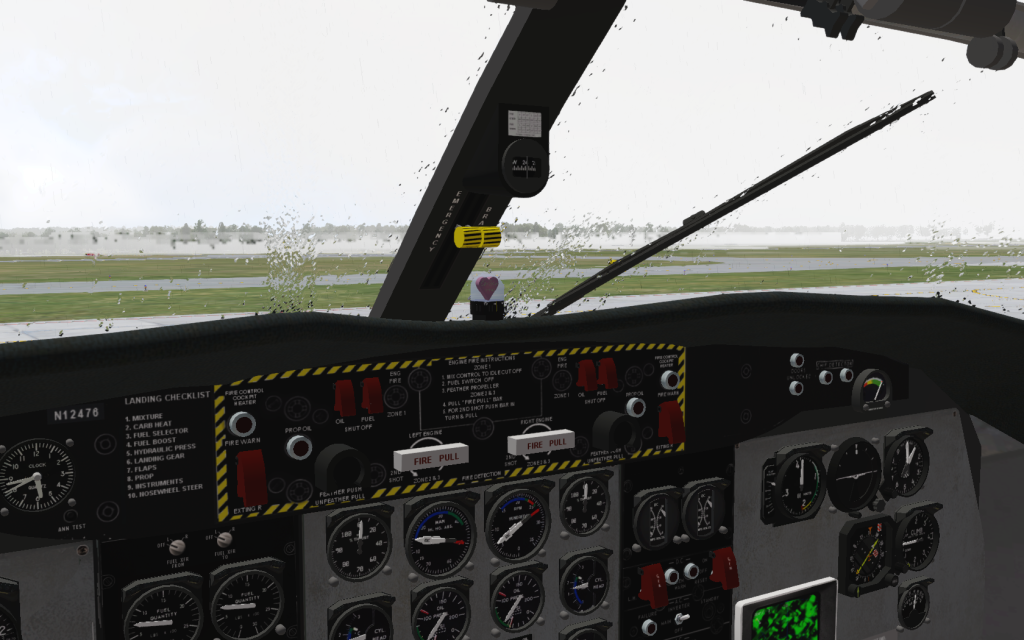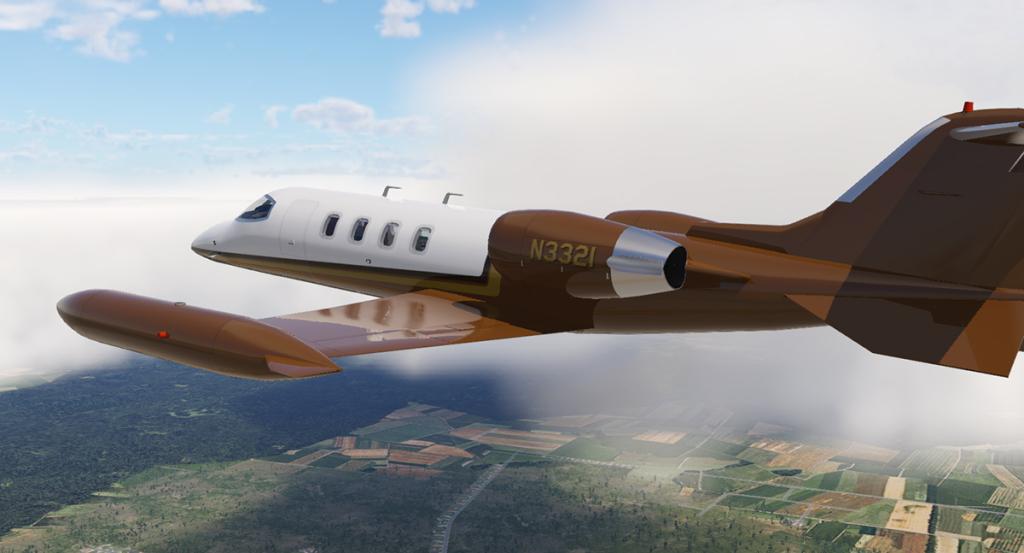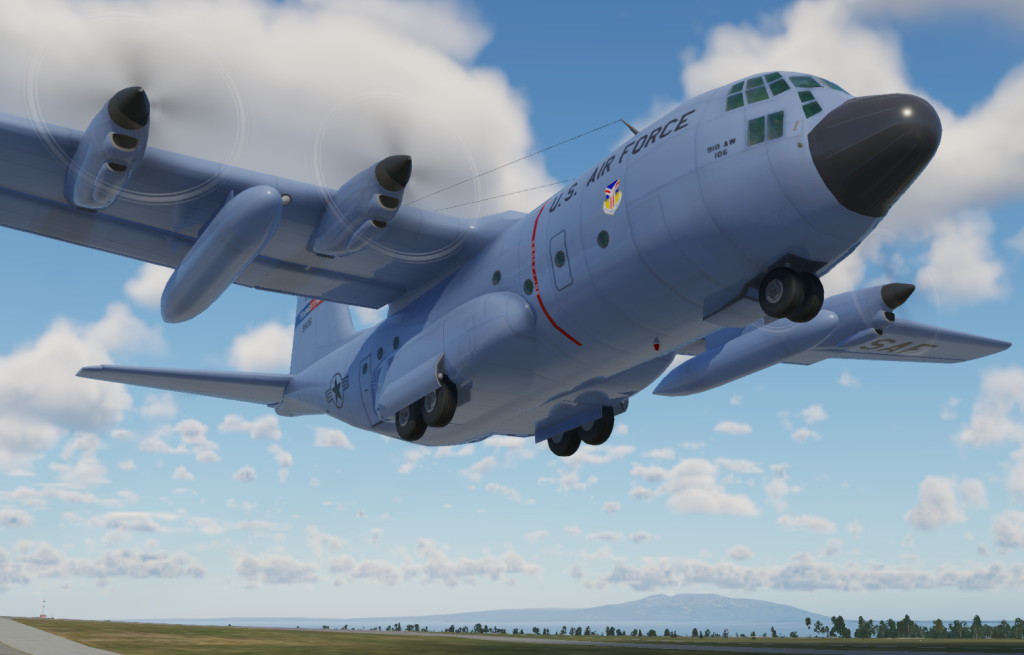Search the Community
Showing results for tags 'x-hangar'.
-
Aircraft Review: de Havilland Canada DHC-5 Buffalo by X-Hangar By Dominic Smith Introduction Well, I’m back again with a new model from X-Hangar, this time, the venerable DHC-5 Buffalo. This robust and versatile transport aircraft, with its unique charm and capabilities, is the latest to have captured my attention, especially as it’s from a developer whose work I greatly enjoy. The DHC-5 Buffalo, a successor to the DHC-4 Caribou, was developed by De Havilland Canada and first took flight in the 1960s. Designed to meet the demanding requirements of military and civilian operations alike, the Buffalo distinguished itself with its STOL (Short Takeoff and Landing) capabilities, allowing it to operate in diverse and challenging environments. Over the years, it has served various roles, from troop transport and cargo delivery to search and rescue operations, demonstrating its versatility and reliability. X-Hangar's DHC-5 Buffalo, much like the DHC-4 Caribou reviewed previously, showcases the developer's commitment to delivering immersive and accurate flight models accessible to a broad spectrum of simmers. The model comes packed with features that not only bolster its authenticity but also user interaction. Highlights include a carefully modelled 3D cockpit, operational windows, doors, and cargo ramp, realistic rain effects and wipers, two load configurations (passenger or cargo), detailed 3D pilot and passenger figures, a PDF manual, and a huge range of international liveries. Documentation Staying true to X-Hangar's approach of creating both comprehensive and user-friendly aircraft models, the Buffalo comes with a nicely detailed 19-page PDF manual, which provides a thorough overview of the Buffalo's operational features and cockpit layout. The manual not only explains the aircraft’s functionality but also includes detailed information on how to operate the aircraft through all phases of flight. The documentation is extremely well-written and includes numerous images which clearly illustrate key aspects of the aircraft's cockpit and operation. Installation The installation process for the DHC-5 Buffalo is straightforward, mirroring the simplicity and user-friendliness characteristic of other X-Hangar offerings, such as the previously reviewed Caribou. Once purchased, users simply download the provided zip file which contains both X-Plane 12 and 11 variants. When extracted, it’s just a simple case of placing the appropriate folder directly into the 'Aircraft' folder of their X-Plane installation. The procedure is devoid of complicated steps, eliminating the need for navigating through perplexing instructions or dealing with third-party software wrappers. A key highlight is the absence of online activation requirements, emphasizing X-Hangar's user-centric approach: once you've made your purchase, the aircraft is unequivocally yours. This ensures a seamless integration into your X-Plane setup, allowing you to take to the skies with the Buffalo without any unnecessary delays or technical hurdles. Exterior X-Hangar's rendition of the DHC-5 Buffalo, akin to their DHC-4 Caribou, embodies a robust and functional design that mirrors the real-world aircraft's versatility in both military and civilian operations across the globe. Designed to tackle the challenges of demanding environments and heavy loads, often operating from short and poorly surfaced airstrips, the model captures this essence beautifully. The model's exterior features the short, stout fuselage, high wings, and twin turboprop engines, closely resembling those of the DHC-4 Caribou, albeit slightly larger and with more power engines. The texturing on the exterior is particularly commendable, with liveries that closely resemble those of actual aircraft, enhancing the model's authenticity. Notably, the textures on the Buffalo show a refinement over those seen on the Caribou, with an improvement in the metallic sheen, making the liveries appear more realistic, although still retaining a certain stylistic charm that contributes to the model's appeal. The exterior of the Buffalo is visually appealing, striking a good balance between realism and artistic interpretation. While it may not achieve the photorealistic quality of some more expensive models, X-Hangar's Buffalo stands out as a faithful representation of the aircraft's exterior. The addition of interactive features, such as the operational doors, windows, rear loading ramp, plus an X-Hangar tent and truck, further enriches the user experience, offering a comprehensive and enjoyable portrayal of the iconic Buffalo. Interior The cockpit of X-Hangar's Buffalo is a testament to the developer's ability to balance functionality with visual appeal, subtly enhancing upon the precedent set by the Caribou. It presents a layout that's not only practical but also enriched with the distinctive charm that's become synonymous with X-Hangar's designs. The main panel in front of the pilot houses the essential six flight instruments alongside the Century 41 autopilot, establishing a solid foundation for flight operations. The centre console is thoughtfully allocated to engine gauges and includes a Garmin 530 GPS unit, equipped with a pop-out feature for ease of use. Engine fire controls are strategically placed just above this area for quick access in emergency situations. The space between the two pilot seats is home to the crucial radio controls, ensuring that communication is always within reach. Above, the overhead panel integrates throttle and prop pitch controls, flaps, and ignition switches, thoughtfully arranged to break up the expansive glass area, adding to the cockpit's functional aesthetics. Despite the inherent complexity of a cockpit designed in the 1960s, X-Hangar has managed to render all instruments, gauges, and switches with clarity and precision. Although a closer inspection might reveal a slight loss in sharpness, this minor limitation does not detract from the overall quality of the texturing, which remains consistent throughout the aircraft. This commitment to detail ensures that, despite its age, the Buffalo's cockpit is both a visually appealing and highly functional space, reflective of the aircraft's storied history and X-Hangar's dedication to authenticity. Stepping into the cabin, and you're presented with a choice that adds a unique layer of versatility to the Buffalo experience: seats filled with passengers or, with a simple click on the “fold all seats for cargo layout” option in the kneepad, classic vehicles from yesteryears. The ability to switch between a passenger layout and a cargo configuration not only showcases the Buffalo's adaptability but also injects a nice does of variety to the model. Sounds The included sounds of X-Hangar's Buffalo do not use the FMOD sound system, a choice I find refreshing in a landscape where FMOD is often hastily considered a standard. Despite this, the auditory experience delivered is more than satisfactory, with the engine sounds being particularly pleasing. Whilst it's difficult to show sounds in a written review, the video below gives a good likeness to what the turboprops sound like in the X-Hangar model. Flight Characteristics After acquainting myself with the Buffalo's details, I was keen to experience its performance in the air, selecting Juneau International Airport in Alaska as my departure point, a location that's been a favourite of mine since acquiring the Inside Passage and Final Frontier packages from Tom Curtis back in the X-Plane 9 days. From the outset, the Buffalo's ground handling, in much the same way as the Caribou, impressed me with its responsiveness, making taxiing to the runway an enjoyable experience. As I initiated takeoff and advanced the throttles, the aircraft propelled forward, revealing the abundant power in the GE T64 turboprops. In what seemed like mere moments, true to its STOL design, the Buffalo effortlessly ascended, setting the stage for a captivating tour around Juneau. Once airborne, the increased thrust from the twin turboprops was immediately noticeable, offering a significant boost in performance over the DHC-4. This extra thrust was particularly apparent during the cruise phase, allowing the aircraft to maintain altitude with ease. While I refrained from executing what some might term 'enthusiastic manoeuvres', I did conduct a few stall tests. The Buffalo behaved predictably in these situations, exhibiting only a minor wing dip before recovery, aligning with expectations for an aircraft of its class and design. Approaching Juneau for the return, the Buffalo's low-speed handling merits became increasingly apparent. The final approach and touchdown called for a few delicate touches of correction due to the wind, but here again, the aircraft handled these with ease. Performance The performance of the DHC-5 Buffalo mirrors that of other X-Hangar models, showcasing an exceptional consideration for hardware requirements. Much like their previous, the Buffalo ensures that even those without the latest and greatest PC setups can still enjoy a rich, immersive experience. This approach allows simmers the flexibility to add detailed scenery or experiment with changeable weather conditions, without having to worry about overtaxing their systems. It's this level of thoughtfulness in design that makes flying the Buffalo not just a visually satisfying experience, but also a smooth and accessible one for a wide range of X-Plane users. Conclusion The DHC-5 Buffalo by X-Hangar, much like its predecessor, the Caribou, seamlessly integrates nostalgia with practicality. It shines in performance, demonstrating X-Hangar's commitment to producing highly enjoyable models that perform extremely well across a broad spectrum of PC hardware without compromising on immersion. Opting out of the race for 4K textures, it instead boasts authentic sounds and an impressive array of liveries, all contributing to its unique charm. For simmers aiming to diversify their collection with a historically rich aircraft, the Buffalo distinguishes itself as an exceptional pick, ready for adventures that few others in its class can match. ________________________ The de Havilland Canada DHC-5 Buffalo by X-Hangar is now available from the X-Plane.Org Store here: de Havilland Canada DHC-5 Buffalo Priced at US$22.95 Features For both X-Plane 12 and 11 3D cockpit VR cockpit Rain and wipers Opening windows Opening doors Opening ramp Yoke hides with keyboard key or press of a button on the panel Steerable yoke in both 3d and VR Pilot figures Passenger figures Static models Chocks and remove before flight flags Menu to hide co-pilot and other options Two different loads: Passenger or Cargo Cargo or passenger load displays according to load (more with more weight and less with less weight) Many international liveries Layers for painting your own livery Garmin 540 GPS with pop out or press buttons Autopilot Century 41 Checklist in .txt format to use in the Sim User manual in .pdf format to help fly in X-Plane FSE file included to fly Flight Sim Economy Requirements X-Plane 12 or X-Plane 11 Windows, Mac, or Linux 8 GB VRAM Minimum Download Size: 311 Mb Review System Specifications Intel i5 10400 – 32GB RAM - Nvidia Asus RTX 3060 – Windows 10 Home 64 Bit __________________________________ Aircraft Review by Dominic Smith 9th February 2024 Copyright©2024: X-Plane Reviews (Disclaimer. All images and text in this review are the work and property of X-PlaneReviews, no sharing or copying of the content is allowed without consent from the author as per copyright conditions).
-
NEWS! - Aircraft Release : X-Hangar releases de Havilland Canada DHC-5 Buffalo A sturdy workhorse is the DHC-5 Buffalo... The de Havilland Canada DHC-5 Buffalo is a short takeoff and landing (STOL) utility transport turboprop aircraft developed from the earlier piston-powered DHC-4 Caribou. The aircraft has extraordinary STOL performance and is able to take off in distances much shorter than even most light aircraft can manage. The Buffalo arose from a 1962 United States Army requirement for a STOL transport capable of carrying the same payload as the CH-47A Chinook helicopter. De Havilland Canada based its design to meet the requirement on an enlarged version of its DHC-4 Caribou, already in large-scale service with the United States Army, to be powered by General Electric T64 turboprops rather than the Pratt & Whitney R-2000 piston engines of the Caribou. De Havilland's design, the DHC-5 Buffalo, was chosen as the winner of the United States Army competition in early 1963, with four DHC-5s, designated YAC-2 (later CV-7A and subsequently C-8A) ordered. The first of these aircraft made its maiden flight on 9 April 1964, and all four aircraft were delivered in 1965. This is an X-Plane 12 aircraft release for X-Hangar, but an X-Plane 11 version is part of the package... there are a LOT of features. X-Plane Features: 3D cockpit VR cockpit Rain and wipers Opening windows Opening doors Opening ramp Yoke hide with keyboard key or press of a button on the panel Steerable yoke in both 3d and VR Pilot figures Passenger figures Static models Chocks and remove before flight flags Menu to hide co-pilot and other options 2 different loads: Passenger or Cargo Cargo or passenger load displays according to load (more with more weight and less with less weight) Many international liveries Layers for painting your own livery Garmin 540 GPS with pop out or press buttons Autopilot Century 41 Checklist in .txt format to use in the Sim User manual in .pdf format to help fly in X-Plane FSE file included to fly Flight Sim Economy Performance Cruise speed: 227 kn (261 mph, 420 km/h) maximum at 10,000 ft (3,000 m) Stall speed: 73 kn (84 mph, 135 km/h) 40 degree flaps at 46,900 lb (21,273 kg) Range: 600 nmi (690 mi, 1,100 km) at 10,000 ft (3,048 m) with maximum payload Ferry range: 1,770 nmi (2,040 mi, 3,280 km) zero payload Service ceiling: 31,000 ft (9,400 m) g limits: 2.5g (manoeuvring limit load) Rate of climb: 1,820 ft/min (9.2 m/s) Take-off run: 2,300 ft (701 m) Take-off distance to 50 ft (15 m): 2,750 ft (838 m) (mid cg range) Landing run: 850 ft (259 m) Landing distance from 50 ft (15 m): 2,010 ft (613 m) New X-Hangar support forum Images are courtesy of X-Hangar ________________ Yes! the de Havilland Canada DHC-5 Buffalo by X-Hangar is NOW available from the X-Plane.Org Store here : de Havilland Canada DHC-5 Buffalo Price is US$24.95 X-Plane 12 or X-Plane 11 Windows, Mac or Linux 8 GB VRAM Minimum Download Size: 311 Mb Current version: 1.0 (January 28th 2024) ________________ News by Stephen Dutton 30th January 2024 Copyright©2024: X-Plane Reviews Disclaimer. All images and text in this review are the work and property of X-PlaneReviews, no sharing or copy of the content is allowed without consent from the author as per copyright conditions) All Right Reserved.
-
Aircraft Review: X-Hangar Lockheed C-130 Hercules By David York Introduction The Lockheed C-130 Hercules, an iconic American four-engine turboprop military transport aircraft, was designed and built by Lockheed, and is renowned for being the longest continuously produced military aircraft for over 60 years. I recall initially mistaking the Air America movie's aircraft for the Hercules, with Mel Gibson seemingly playing a supporting role to the airplane. The confusion was understandable, given the quick shots and my incorrect engine count. The C-130, with its four engines, shares a resemblance to the Fairchild C-123 Provider, which is a derivative of the Chase XCG-20 Avitruc. My familiarity with this magnificent airplane grew when my in-laws lived near the runway at CFB Trenton. On 2 February 1951, the United States Air Force issued a General Operating Requirement (GOR) for a new transport aircraft. This was to replace the aging WW2 era piston-engined transports. The Request for Proposal (RFP) was quite specific, listing the need to accommodate ninety-two passengers, seventy-two combat troops, or sixty-four paratroopers. The cargo compartment had precise dimensions, 41 ft long, 9 ft high, and 10 ft wide, and a turboprop powerplant was specified, as jet engines at the time did not meet the necessary tactical requirements. The C-130 was designed for versatility, capable of operating on short and rudimentary runways. Its range of 1,100 nautical miles made it suitable for a variety of missions. Kelly Johnson, initially not a fan of the design due to his preference for more combative aircraft, eventually came to appreciate the C-130. Willis Hawkins, the lead designer, suggested that Johnson's eventual acceptance might have been influenced by the C-130’s adaptability for various roles, including as a cruise missile launcher. The Hercules has been adapted for numerous roles such as a gunship, search and rescue, scientific research support, weather reconnaissance, aerial refuelling, maritime patrol, and aerial firefighting. It remains the primary tactical airlifter for many military forces globally, with over forty variants and civilian versions like the Lockheed L-100, operated by more than sixty nations. X-Plane Model The package for the C-130 model is thoughtfully designed for compatibility with both X-Plane versions 11 and 12. It's bundled in a way that facilitates an upgrade path for those using version 11, which is less demanding on VRAM. My setup includes an AMD 8-core FX processor, 16GB RAM, and an AMD Radeon RX570 series display card. With 4 GB of VRAM, it manages decently, though there are occasional slowdowns. Installation Procedure The installation of the C-130 Hercules package requires a few straightforward steps: Begin by unzipping the main package to obtain two separate zips: c130_12.zip and c130_11.zip, for X-Plane versions 12 and 11 respectively. Choose the version you need and unzip it into your preferred subdirectory within the <Aircraft> directory of the respective X-Plane version. Once you start X-Plane, the program automatically detects the new aircraft and adds it to your <New Flight> menu. You’re now ready to fly! The C-130 manual is located in the C-130H Hercules\Docs\manual x-plane\ sub-directory. It's recommended to review this manual early on, as it details extra features and helps familiarize you with the aircraft's cockpit, which can initially appear quite complex. You should also take a moment to look over the checklists available in the pop-up. For those interested in using the XFSE plugin: Install XFSE if it’s not already set up. A basic xfse-alias.txt file is included. Refer to the FSEconomy add-on manual for setup instructions. Documentation The manual for X-Hangar's C-130 is quite comprehensive, providing a solid overview of the model's features and a helpful guide to the flight deck and panel layouts. The manual is well-illustrated, including performance charts from the original aircraft's Pilot's Operating Manual (POM), giving a practical insight into optimal aircraft operation. From personal experience, I usually dive right into flying before consulting the manual (typical of many, I suppose!). However, I've found that an early perusal of the manual significantly flattens the learning curve and reveals many nuances that might otherwise be missed. Exterior The Hercules' shoulder-wing design might initially surprise those accustomed to more sleeker looking aircraft, but it highlights the craft's functionality over showmanship, and X-Hangar's model captures this robust spirit well. The level of detail is commendable, from the textures to the overall structure, though it lacks specific liveries like RAAF, RCAF, or UK allies. However, the provided blank livery templates offer a chance for personal customization. The minute details like antennae, propellers, and doors are well modelled, adding to the realism. This realism is further accentuated when you open the crew and cargo doors, revealing the intricacies of ground handling equipment, a vital aspect of the Hercules' operations. The airdrop animation is a notable feature, though I personally miss the inclusion of the Low Altitude Parachute Extraction System (LAPES), a system I've often seen in Canada. Despite this, X-Hangar's selection of features for the model is astute. The model uses Blender-based particles for exhaust and other systems, enhancing realism, especially with the airdropped cargo descending by parachute. The inclusion of the L-100-30 build, a stretched version of the C-130 with six-bladed propellers, is executed with the same attention to detail, showcasing the model's versatility and commitment to realism. Interior Recalling a special occasion when I once sat in a C-130 pilot seat, I can't help but compare that memory to X-Hangar's rendition of the cockpit. While it doesn't match my memory exactly, they've done a solid job without resorting to full photorealism. For those of you looking for a bit of modernity, the L-100 stretch model features an option for a digital panel, which is a nice addition. In the C-130H, the clipboard pops up when the square red button is pressed, offering functionalities like showing or hiding the crew, JATO selection, and airdrop details. The control yokes are toggled as usual with the ‘Y’ key. The absence of high-degree photorealism might be a downside for some, as well as the lack of interactivity with every button or switch, but personally, I'm not at all disappointed. The panel and cockpit are well-designed, filled with controls, albeit with some non-functional elements like the microwave in the kitchen behind the flight engineer's station. It’s these small details that add charm, even if you can't leave the water running. Opening the crew door, descending the ladder, and then opening the passage door, reveals the cargo hold. Initially, I found myself walking through the fuselage wall until I figured out how these doors functioned. Remember to close all doors and ramps, or you might find yourself with unexpected airborne companions like a cargo crate and lift truck. It’s unclear if the weight of the lift truck is factored into the plane's gross weight, though the regular cargo weight is included when selected from the weapons menu. Flight Dynamics While I've never flown a C-130 and am not a licensed pilot, I've explored its unique characteristics based on available information. Willis Hawkins, in an interview with Lockheed's Code One Magazine, mentioned the C-130's resistance to stalling. He recounted an attempt to stall it, which led to a flip rather than a stall of the main wing, possibly due to the six-bladed props' effects on the wing's boundary layer. Curiously, I tested this on X-Hangar’s model. At 10,000 feet, as I slowed down, the stall alarm activated, but the wings seemed to keep flying, even with the four-bladed props. With the L-100-30's six-bladed props, I didn’t experience the reported “unstallability” but rather a gradual descent. This simulation is remarkably forgiving, making it the first plane I've successfully landed on my first attempt. Its handling is stable, smooth, and relaxed. I even took a virtual flight from CFB Trenton to Niagara Falls International, enjoying the XP-12 view and exploring the plane in flight. Sounds The alarms and alerts have custom sounds, but the engine, prop, and wind noises are the default turboprop sounds from X-Plane. While they work adequately, the unique sound of the Allison T56-A-15 turboprop engines would have been a treat. However, obtaining specific engine sounds, especially in FMOD format, is challenging, so I respect X-Hangar's decision to keep the model affordable. Night Lighting The night lighting of the model is functional, following a tried-and-tested method. It effectively illuminates the interior, creating an appropriate ambiance for night operations. While it doesn't employ the latest lighting effects, it ensures a dependable and solid experience in line with the Hercules' reliable nature. Performance In my experience with X-Plane 12 on my somewhat dated hardware, frame rates were around 22-30 fps, so generally smooth but with occasional flutter during high-speed, low-altitude passes. However, it's important to note that these performance metrics are largely influenced by my hardware capabilities, and users with more up-to-date systems can expect improved performance. In X-Plane 11, the model performed slightly better on my setup, achieving 28-37 fps with fewer instances of freezing, particularly when accessing the map window. Given the model's detailed custom objects, which surpass those in X-Hangar's Caribou model, longer load times and avoidance of multitasking in XP-12 were necessary on my system to maintain stability. Conclusion I've always loved the Hercules, and this X-Hangar model is the best rendition I've flown, making it a worthwhile purchase even by my Scottish, thrifty standards. The cargo handling effects might not be my favourite, but the JATO option and overall art and animation are top-notch. When you look out and see a lift-truck flying alongside because you forgot to close the crew door, it's both amusing and a testament to the model's detail. The cockpit, while not overloaded with interactive features, perfectly suits my flying style. This model is enjoyable and realistic, a great fit for both X-Plane 11 and 12 users. Whether you're on a budget or equipped with a high-end system, this model will not disappoint. The more demanding simmers might long for additional features, but there's plenty to enjoy here. Overall, the C-130 is a superb addition to X-Hangar’s fleet ________________________ C-130H Hercules by X-Hangar is now available from the X-Plane.Org Store here: C-130H Hercules Priced at $27.95 Features Two separate versions to fly for both v11 and v12 Two separate .zip files Both a digital Instrument panel and analog Working wipers in v12 Rain on the glass for v11 (limited to win Vulkan) and v12 Much improved landing and taxi lights in v12 3D modeled crew Working cargo door Working crew door X-Plane FMS for v11 and v12 with pop up panel or press 3d buttons X-Plane Garmin 530 with pop up panel or press 3d buttons Many interchangeable international liveries Both civil and military liveries Easy to paint liveries with the blank included Checklist in .txt format for use in the sim PDF manual to help familiarize yourself with the aircraft Static elements Cargo automatically loads with added weight to the aircraft Animated parts Option to use and display JATO rockets (fun for shorter take off). FSE file included Requirements X-Plane 12 or X-Plane 11 Windows, Mac, or Linux 4 GB VRAM Minimum - 8 GB+ VRAM Recommended Download Size: 595 MB Current Version: 12.07 (November 14th, 2023) Review System Specifications AMD FX-8350 - 16GB - AMD Radeon RTX 570 8GB - Windows 10 Pro 64 Bit __________________________________ Aircraft Review by David York 11th January 2024 Copyright©2024: X-Plane Reviews (Disclaimer. All images and text in this review are the work and property of X-PlaneReviews, no sharing or copying of the content is allowed without consent from the author as per copyright conditions).
-
NEWS! - Aircraft Upgrade : Cessna 404 Titan X-Plane 12 by X-Hangar The Cessna Model 404 Titan is an American twin-engined, light aircraft built by Cessna Aircraft. It was the company's largest twin piston-engined aircraft at the time of its development in the 1970s. Its US military designation is C-28, and Swedish Air Force designation TP 87. The Cessna 404 was a development of the Cessna 402 with an enlarged vertical tail and other changes. The prototype first flew on February 26, 1975. It is powered by two 375 hp/280 kW turbocharged Continental Motors GTSIO-520 piston engines. Two versions were offered originally; the Titan Ambassador passenger aircraft for ten passengers, and the Titan Courier utility aircraft for passengers or cargo. By early 1982 seven different variants were available, including a pure cargo version, the Titan Freighter. The Freighter was fitted with a strengthened floor, cargo doors, and its interior walls and ceiling were made from impact-resistant polycarbonate materials to minimize damage in the event of cargo breaking free in-flight. X-Plane features: 3D cockpit Multiple international liveries Pilot figure Passenger figures Passengers and Crew load with added payload weight User manual in .pdf format 44 pgs. Garmin 530 GPS with pop up or use buttons in a 3D environment Layers included to help paint your own livery Blank livery included Liveries without assigned tail numbers included so you can add your own Nice frame rates GPU displays with a click of the external power switch (intended for ground use only) FSE file included Opening passenger doors Opening pilot door Multiple camera views 0 thru 7 (numlock on) V11 rain effects (limited to win vulcan only) V12 rain effects V12 new payload system V12 better taxi and landing lights Both the new X-Plane 12, and earlier X-Plane 11 versions are available for download in the package. General characteristics Crew: 2 Capacity: 6–8 passengers Length: 39 ft 6 1⁄4 in (12.046 m) Wingspan: 46 ft 8 1⁄4 in (14.230 m) Height: 13 ft 3 in (4.04 m) Wing area: 242.0 sq ft (22.48 m2) Aspect ratio: 9.0:1 Empty weight: 4,816 lb (2,185 kg) Max takeoff weight: 8,400 lb (3,810 kg) Fuel capacity: 340 US gal (280 imp gal; 1,300 L) New X-Hangar support forum Images are courtesy of X-Hangar ________________ Yes! the Cessna 404 Titan by X-Hangar is NOW available from the X-Plane.Org Store here : Cessna 404 Titan Price is US$21.95 Requirements X-Plane 12 or X-Plane 11 Windows, Mac or Linux 4 GB VRAM Minimum - 8 GB+ VRAM Recommended Download Size: 204 MB Last Updated: Oct 2023 ________________ News by Stephen Dutton 5th October 2023 Copyright©2023: X-Plane Reviews Disclaimer. All images and text in this review are the work and property of X-PlaneReviews, no sharing or copy of the content is allowed without consent from the author as per copyright conditions) All Right Reserved.
-
NEWS! - Piper Aztec PA23-250 by X-Hanger updated to X-Plane 12 The Piper PA-23, named Apache and later the Aztec, is an American four to six-seat twin-engined light aircraft aimed at the general aviation market. The United States Navy and military forces in other countries also used it in small numbers. Originally designed as the Twin Stinson in the 1950s by the Stinson Aircraft Company, Piper Aircraft manufactured. In 1959, Piper produced an upgraded version with 250 hp (186 kW) Lycoming O-540 engines and a swept vertical tail as the PA-23-250, and named it Aztec. The first models came in a five-seat configuration. In 1961, a longer-nosed variant, the Aztec B, entered production. Later Aztecs were equipped with Lycoming IO-540 fuel-injected engines and six-seat capacity, and remained in production until 1982. Turbocharged versions of the later models could fly at higher altitudes. This release is the updated X-Hanger version of the Aztec, and comes with two versions for both X-Plane11, and now X-Plane12. There is also two separate Models to fly in the "Regular" aspirated and the "Turbo" with extended range. Features Include; 2 separate models to fly 2 separate .zip files for v11 and v12 Garmin 530 with pop up panel or use buttons Opening/closing door with a mouse click on the door handle (interior) Many international interchangeable liveries Pilot figures and passengers that load with payload weight Custom sounds Yoke hide with a mouse click Checklist in .txt format for use in the sim User supplement manual in .pdf format to use for x-plane Can display For Sale flags on props with a click on the instrument panel or use Shift + F4 FSE (Flight Sim Economy) files included so your ready to fly. Making money is good with a 5 passenger carry. v11 rain for win vulcan only v12 rain v12 new payload system v12 better landing and taxi lights New X-Hangar support forum Images courtesy of X-Hangar ________________ Yes! the Piper Aztec PA23-250 by X-Hanger is NOW available from the X-Plane.Org Store here : Piper Aztec PA23-250 Price is US$19.95 Requirements X-Plane 12 or X-Plane 11 Windows, Mac or Linux 8 GB VRAM Recommended Current version : 12 (May 16th 2023) ________________ News by Stephen Dutton 20th May 2023 Copyright©2023: X-Plane Reviews Disclaimer. All images and text in this review are the work and property of X-PlaneReviews, no sharing or copy of the content is allowed without consent from the author as per copyright conditions) All Right Reserved.
-
Aircraft Review: Short SC7 Skyvan by X-Hangar Written by Dominic Smith Introduction As an X-Plane user and aviation enthusiast, I am excited to introduce the Shorts Skyvan, an iconic and versatile utility aircraft, wonderfully recreated by X-Hangar for X-Plane. First flown in 1963, the Skyvan was designed by Short Brothers (usually referred to as Shorts), a renowned British aerospace company with a rich history dating back to the early 20th century. Known for their innovative and robust aircraft designs, Shorts created the Skyvan to address the growing demand for a versatile and rugged short takeoff and landing (STOL) aircraft capable of operating in a variety of environments. Over the years, more than 150 Skyvans were produced, serving various roles such as cargo transportation, military operations, and even skydiving platforms. The Skyvan’s simple, yet endearing boxy design, excellent short-field performance, and ease of maintenance have made it a popular choice among operators worldwide, so I’m extremely pleased to see it make its way into X-Plane. X-Hangar’s Skyvan comes with an array of features to enhance the simulation experience; somewhat of a trademark when it comes to their models. These include the ability to choose between passenger or cargo loads through an easy-to-use menu, animated pilot and copilot models that load with added weight, and the option to add passengers or cargo with corresponding payload weight adjustments. Additionally, the model includes interactive doors, a detailed checklist to follow in the simulator, a user manual in PDF format, international liveries, and a blank livery template for custom paint jobs. Some other noteworthy features of this Skyvan are the inclusion of a GPU, a jeep vehicle, various cargo load objects, suitcases for the passenger-cargo hold, and a porta-potty with a functional door (something I thankfully didn’t need to use during my testing). To further enhance the experience, X-Hangar has provided an FSE file, a Garmin 530 GPS, a Stec55 autopilot, and rain effects for both X-Plane 11 and 12, with rain wipers available for X-Plane 12. Exterior Before taking off, I decided to take a moment to admire the exterior of the Skyvan. Stepping outside the aircraft, I was immediately impressed by X-Hangar's attention to detail in replicating the Skyvan's unique design, which features a high wing, twin-turboprop engines, and as previously mentioned, a boxy fuselage. As I walked around the aircraft, I noticed the well-crafted 3D model, which highlighted the Skyvan's sturdy landing gear, designed to handle rough and unprepared runways with ease. The twin turboprop engines, mounted on either side of the fuselage, were intricately modelled, complete with propellers and exhaust pipes. The Skyvan's characteristic T-tail design was also accurately depicted, giving the aircraft its distinctive appearance. The exterior textures of X-Hangar's Skyvan are of high quality, delivering a realistic representation of the aircraft with various liveries, sixteen in total (seventeen if you include the paint kit). Unfortunately, none of the included liveries featured any weathering, which would have added to the authenticity of this age-old aircraft. Nonetheless, this omission does not detract from the overall enjoyment of flying the Skyvan, but it would have been nice to see some weathering to truly capture its character. The model also featured interactive elements, such as doors that could be opened with a simple click, allowing for a more immersive experience. I also took a moment to appreciate the additional objects included with the model, such as the GPU and Jeep vehicle, which added to the overall realism of the simulation. The cargo load objects and suitcases were a nice touch, giving the aircraft a sense of purpose and functionality beyond just flying. Interior When it comes to the interior, X-Hangar's Skyvan strikes a perfect balance between functionality and realism. The developer has incorporated both pilot and copilot models, as well as 3D passengers, to create a lifelike atmosphere within the aircraft. While the texturing and modelling lean more towards functionality rather than ultra-realism, the overall result is quite impressive and particularly beneficial when VRAM performance is paramount. The Garmin 530 GPS and Stec55 autopilot systems add a touch of modernism to the Skyvan's cockpit, providing X-Plane users with reliable and user-friendly navigation tools. The combination of these advanced systems with the Skyvan's classic charm offers an enjoyable flying experience that caters to a wide range of virtual pilots' preferences. As well as the above, the developer has also introduced new rain effects which significantly enhance the visual experience during adverse weather conditions. These effects contribute to the overall immersion and realism of the simulator, creating an even more engaging environment for virtual pilots to explore. Flight Characteristics Prior to takeoff, I completed the necessary checks, ensuring that the trims were set for takeoff, fuel levels were adequate, flaps were configured as required, and all flight instruments were functioning correctly. I also verified that the ammeters were charging and that the flying controls were free and functioning properly. As I taxied towards the runway, I noticed the Skyvan's responsive nose wheel steering and its ability to handle taxiway turns with ease. Its moderate size and excellent visibility from the cockpit made it easy to navigate around the airport, even in tighter spaces. Upon reaching the runway, I completed the runway checks by ensuring that all doors were closed and secured, anti-icing systems were set as required, and the RPM levers were in the "Take-off" position. I also checked the engine instruments and set the power levers to Maximum Takeoff Power (MTOP). As I began the takeoff roll, the Skyvan accelerated steadily, and I could feel the aircraft's powerful twin-turboprop engines working to lift the aircraft off the ground. The responsive controls allowed for smooth rotation, and the aircraft's relatively short takeoff distance made it clear why the Skyvan is renowned for its STOL capabilities. Once airborne, I raised the flaps and ensured that the nose wheel steering was straight. The Skyvan's climb performance was impressive, and its stable flight characteristics made it easy to maintain the desired pitch attitude and airspeed during the initial climb. The Skyvan, a high-wing and somewhat unwieldy design, is known for its ruggedness and utilitarian attributes rather than its speed or agility. As such, the aircraft felt relatively heavy and turned rather slowly during testing. However, this is typical for a utility aircraft like the Skyvan, which is designed to operate in short-field environments and transport cargo or passengers in tight spaces. Despite the slower handling, the Skyvan proved to be quite stable in the cruise phase, with minimal oscillations or turbulence. Its high-wing design provided excellent visibility below the aircraft, making it ideal for observation, aerial photography, or other similar missions. The cockpit itself offered good visibility, with large windows that allowed for a clear view of the surroundings. The instrument panel was logically arranged, enabling easy monitoring of the aircraft's systems and navigation instruments. In terms of power management and fuel efficiency, the Skyvan's performed as expected. The turboprop engines provided ample power to maintain the desired altitude and airspeed, while the aircraft's fuel consumption was within the expected range for its design and purpose. Before initiating the landing sequence, I performed the landing checks, ensuring the fuel booster pumps were on, engines were within EGT limits, wheel brakes were checked, and flaps were set as required. I also checked the security and cabin signs (no screams were heard). During the final approach, I adjusted the flaps and RPM levers as needed and ensured the nose wheel steering was straight. Upon landing, I set the RPM levers to taxi, adjusted the flaps, and confirmed the wheel brakes and anti-icing systems were functioning properly as per the checklist. After coming to a complete stop, I conducted the shutdown checks, ensuring all systems were turned off and secured. Performance When it comes to performance, X-Hangar's Skyvan for X-Plane truly shines. Developed using Plane Maker, the model is optimized to deliver excellent performance even on modest hardware (unlike some resource-heavy models created in Blender, A3CD, etc). This optimization ensures that users with various system capabilities can enjoy a seamless flying experience without encountering framerate issues. During my testing, the Skyvan performed flawlessly on my system. I encountered no framerate loss, spikes, or pauses throughout my testing, which speaks volumes about the optimization work done by the developer. Conclusion In summing up, the Shorts Skyvan by X-Hangar offers an engaging and realistic simulation experience for aviation enthusiasts and casual simmers alike. With its impressive array of features, excellent flight performance, and accessibility on modest hardware, this Skyvan model is a valuable addition to any X-Plane user's virtual hangar. The classic look of the cockpit, combined with the rich history of the Shorts Skyvan, adds to the charm and allure of this iconic aircraft. It's worth noting that if you're an X-Plane user who demands the latest and greatest graphical models, or your liveries must include weathering, then the Skyvan may not be for you. However, for everyone else who appreciates the unique capabilities, history, and versatility of this extraordinary aircraft, it's a lovely model that provides an enjoyable and rewarding flight experience. The Skyvan's adaptability makes it an interesting aircraft to fly in X-Plane, presenting simmers with various opportunities to explore different aspects of aviation, such as cargo transportation, passenger services, and special mission operations. The meticulous attention to detail in the model's design and functionality ensures an immersive experience that honours the legacy of this remarkable aircraft. ________________________ The Short SC7 Skyvan by X-Hangar is now available from the X-Plane.Org Store here: Short SC7 Skyvan Priced at US$22.95 Features The model supports both passenger or cargo loads activated by a menu. Passenger load is default Pilot and copilot models that load with added weight Passengers load with added payload weight Cargo loads with added payload weight Doors open with a click Detailed checklist to follow in the simulator (default x-plane) User manual for x-plane in .pdf format International liveries Easy to paint your own liveries with blank provided Layers included for painting liveries. Adjust transparency to suit your needs. GPU included and activated with external power on Jeep vehicle included and activated with near max weight Various cargo load objects Suitcases that load and stack with added weight in the passenger cargo hold Porta pot included with opening and closing door FSE file provided so you can go fly right away Garmin 530 GPS with pop-up or use buttons Stec55 autopilot Nice frame rates 60+ Rain effects for both v11 and v12. v11 limited to win vulkan Rain wipers for v12 Better taxi and landing lights for v12 Requirements X-Plane 12 or X-Plane 11 (both versions available) Windows, Mac or Linux 4 GB VRAM Minimum - 8GB+ VRAM Recommended Download Size: 279 MB Current version 12 (April 7th 2023) Review System Specifications Intel i5 10400 – 32GB RAM - Nvidia Asus RTX 3060 – Windows 10 Home 64 Bit __________________________________ Aircraft Review by Dominic Smith 20th April 2023 Copyright©2023: X-Plane Reviews (Disclaimer. All images and text in this review are the work and property of X-PlaneReviews, no sharing or copying of the content is allowed without consent from the author as per copyright conditions.
-
NEWS! - X-Hangar updates the DHC4 C-7a Caribou to X-Plane 12 It's an odd looking critter of an aircraft, but one with amazing short field performance and clever STOL (ShortLanding and Takeoff) abilities. My connection with the aircraft was with the large numbers at my closest Australian RAAF Amberley airbase, so they were very frequent and active around our local skies, sadly the DHC-4 are now all retired, but there are still a few left around to look at, at airshows and in museums. The de Havilland Canada DHC-4 Caribou (designated by the United States military as the CV-2 and later C-7 Caribou) is a Canadian-designed and produced specialized cargo aircraft with short takeoff and landing (STOL) capability. The Caribou was first flown in 1958 and although mainly retired from military operations, is still in use in small numbers as a rugged "bush" aircraft. The de Havilland Canada company's third STOL design was a big step up in size compared to its earlier DHC Beaver and DHC Otter, and was the first DHC design powered by two engines. The Caribou, however, was similar in concept in that it was designed as a rugged STOL utility aircraft. The Caribou was primarily a military tactical transport that in commercial service found itself a small niche in cargo hauling. The United States Army ordered 173 in 1959 and took delivery in 1961 under the designation AC-1, which was changed to CV-2 Caribou in 1962. X-Hangar are converting their aircraft quickly to X-Plane 12, not a week goes by without another aircraft released. Here is the next aircraft released in the DHC4 C-7a Caribou. Features here Include: 3 flyable models: radar pod, no radar pod, and bare metal Rain effect on windscreen and windows Garmin 430 with pop up panel Opening engine cowls Opening cargo doors Opening passenger doors Sliding radio tray Detailed 3d engine and props Many custom 3d gauges Many liveries included Pilot figures including pilot, co-pilot, and loadmaster Custom sounds Animated controls Many detail parts Checklist included .pdf manual included that tells you how to fly and use the instrument panels Night LIT textures included Real pilot tested Link to download a 450+ page beautiful, crisp, and clear real world pilot's manual Version XP12 - February 20th 2023 new update features: v11 rain limited to win vulcan only (plugin limitation) new passengers that load with payload weight new seats for passengers new car for cariboub (loads with added payload weight. need near max weight to display) the cargo bay now has a mixture of passengers and cargo intended to enhance the FSE experience v12 rain effects v12 better taxi and landing lights v12 new payload system New X-Hangar support forum Images courtesy of X-Hangar ________________ Yes! the DHC4 C-7a Caribou by X-Hangar is NOW available from the X-Plane.Org Store here : DHC4 C-7a Caribou Price is US$22.95 Requirements X-Plane 11 fully updated Windows, Mac or Linux 4 GB VRAM Minimum Download Size: 472 Mb Version XP12 - Feb 20th 2023 ________________ News by Stephen Dutton 21st February 2023 Copyright©2023: X-Plane Reviews Disclaimer. All images and text in this review are the work and property of X-PlaneReviews, no sharing or copy of the content is allowed without consent from the author as per copyright conditions) All Right Reserved.
-
NEWS! - X-Hangar releases Learjet Model 36 X-Hanger have released a version of the Model 36 Learjet, one of the most famous private jets ever built. The Learjet Model 35 and Model 36 are a series of American multi-role business jets and military transport aircraft manufactured by Learjet. The aircraft are powered by two Garrett TFE731-2 turbofan engines. Its cabin can be arranged for six to eight passengers. The longer-range Model 36 has a shortened passenger area to provide more space in the aft fuselage for fuel tanks. The engines are mounted in nacelles on the sides of the aft fuselage. The wings are equipped with single-slotted flaps. The wingtip fuel tanks distinguish the design from other aircraft having similar functions. Features Include: Avitab display for both v11 and v12. This is powered by a plugin that you can download if you do not already have. Instruction in the .pdf manual. 3d Pilot Figures. The co-pilot will hide with the preflight menu. The pilot is only seen in external view. Easy to read instruments GPU and flight options menu including, engine covers, chocks, remove before flight flags, etc 5 passengers load with payload weight. Hidden when activated with a menu. Many international liveries included Blank livery to make your own Stripes and weathering layers to help paint your livery Use the Autopilot with the FMC (GPS1) or Garmin 530 (GPS2). Rain effects for both v11 and v12. v11 is limited to Windows Vulcan. This is a plugin limitation. Animated Reverse Thrust Animated Spoilers Animated ground emergency chute User manual in .pdf format Checklist in .txt format to use in the sim v11 and v12 use stock FMC Garmin 530 with a pop-up panel or press buttons Updated landing and taxi lights for v12 Updated payload system for v12 Updated gear system for v12 Works with FSE out of the box New X-Hangar support forum Images courtesy of X-Hangar ________________ Yes! the Learjet Model 36 by X-Hangar is NOW available from the X-Plane.Org Store here : Learjet Model 36 Price is US$22.95 Requirements X-Plane 12 or X-Plane 11 Windows, Mac or Linux 4 GB VRAM Minimum. 8 GB+ VRAM Recommended Current version : 12 (Feb 15th 2023) ________________ News by Stephen Dutton 16th February 2023 Copyright©2023: X-Plane Reviews Disclaimer. All images and text in this review are the work and property of X-PlaneReviews, no sharing or copy of the content is allowed without consent from the author as per copyright conditions) All Right Reserved.
-
NEWS! - Aircraft Upgrade : Piper Aerostar 700P by X-Hangar Ted R. Smith was an aviation legend, this is the same person of whom also designed the famous Aero Commander, and bought the first small business jet aircraft to market, which was the Jet Commander which evolved into the Astra Jet.... Then there was his Aerostar/Sequoia the fastest Twin-Engined general aviation aircraft ever built... just the right aircraft for drug running, right. So another legend but in the infamous collection of bad people pretending to be really a good person to get rich is Barry Seal, who was a sort of Robin Hood in reverse, Seal was a pilot for the commercial airline TWA, and was contacted by a CIA case officer and asks Seal to fly clandestine reconnaissance missions for the CIA over Central America using a small plane with cameras installed. But the deal becomes a two sided affair with Seal running drugs into the United States one way for the cartels, and then also smuggling and trading guns back to the cartel in the other direction for the CIA. So for operations like that you need a pretty good aircraft that was the fastest you get you hands on and could fly very high (or very low) when required... depending on who was actually shooting at you. This real life caper was recreated in a film called "American Made" with a certain Tom (Top Gun) Cruise as Barry Seal, but the real star of the film is certainly the Aerostar 600, which was the perfect tool for the dodgy business of doing clandestine CIA missions in moving drugs and running guns. During the time of production, the Aerostar held the speed record for fastest twin piston General Aviation aircraft, capable of cruise speeds from 220 kt (408 km/h) for the earliest 600 models to 261 kt (483 km/h) for the later 700 models. Light construction, low drag and high powered engines also contribute to fast climb rates. So here an upgrade of the Aerostar 700P aircraft by X-Hangar to X-Plane 12, and yes the X-Plane 11 version is also provided in the same package. New Features Include update fixes and upgrades: ALL new 3d instruments and radios. prior version had 2d instruments New passengers and pilot that load with payload weight ALL new international liveries New texturing New cargo objects in the back of the airplane New Avitab screen V11 specific updates: rain plugin added for win vulcan only (plugin limitation) v12 specific updates: rain effects on the glass adjusted landing gear adjusted payload adjusted lights X-Plane Features Include: 3d instrumentation and radios Garmin 530 with pop up window or use buttons Garmin 430 with pop up window or use buttons Weather radar Stec Autopilot Pilot Figure Passengers that load with payload weight Opening/closing passenger door with a mouse click Yoke hide with Y key or click of the mouse Visors that move with the mouse to adjust Many custom international liveries Blank livery to make your own Weathering layers that include panel lines for your own livery Stripes you can click and paste to your own livery Rain effects for v11 win vulcan only (plugin limitation) Rain effects for v12 User manual in .pdf format to get introduced to the airplane Avitab display FSE (flight sim economy) file New X-Hangar support forum Images courtesy of X-Hangar ________________ Yes! the Piper Aerostar 700P by X-Hangar is NOW available from the X-Plane.Org Store here : Piper Aerostar 700P Price is US$19.95 Requirements X-Plane 12 or X-Plane 11 Windows, Mac or Linux 4 GB VRAM Minimum - 8GB+ VRAM Recommended Current version: 1112 - January 30th 2023 ________________ News by Stephen Dutton 31st January 2023 Copyright©2023: X-Plane Reviews Disclaimer. All images and text in this review are the work and property of X-PlaneReviews, no sharing or copy of the content is allowed without consent from the author as per copyright conditions) All Right Reserved.
-
NEWS! - Aircraft Update : C-130H Hercules X-Plane 12 by X-Hangar Who doesn't love the "Herky Bird", or the Lockheed Martin C-130H Hercules four-engine turboprop military transport aircraft. Well X-Hangar have updated their version now to X-Plane 12! An aircraft capable of using unprepared runways for takeoffs and landings, the C-130 was originally designed as a troop, medevac, and cargo transport aircraft. The versatile airframe has found uses in a variety of other roles, including as a gunship, search and rescue, scientific research support, weather reconnaissance, aerial refueling, maritime patrol, and aerial firefighting. It is now the main tactical airlifter for many military forces worldwide. Over forty variants and versions of the Hercules, including a civilian one marketed as the Lockheed L-100, operate in more than 60 nations. It is the go-to aircraft for logistics. Two versions are included for use in X-plane 12: C-130H, and L-100-30 (is a stretched version of the C-130 and has a glass instrument panel) X-Plane Features Include: 2 Separate Versions To Fly for both v11 and v12 2 separate .zip files Both a digital Instrument panel and analog Working wipers in v12 Rain on the glass for v11 (limited to win vulcan) and v12 Much improved landing and taxi lights in v12 3d modeled Crew Working cargo door Working crew door X-plane FMS for v11 and v12 with pop up panel or press 3d buttons X-plane Garmin 530 with pop up panel or press 3d buttons Many interchangeable international liveries Both civil and military liveries Easy to paint liveries with the blank included Checklist in .txt format for use in the sim .pdf manual to help familiarize yourself with the aircraft Static elements Cargo automatically loads with added weight to the aircraft Animated parts Option to use and display JATO rockets. Fun for shorter take off. FSE file included New X-Hangar support forum _______________________________ Yes! the C-130H Hercules by X-Hangar is NOW available from the X-Plane.Org Store here : C-130H Hercules - X-Hangar Price is US$24.95 Requirements X-Plane 12 or X-Plane 11 Windows, Mac or Linux 4 GB VRAM Minimum - 8 GB+ VRAM Recommended Download Size: 595 MB Current Version: 12 (Jan18th 2023) ________________ News by Stephen Dutton 20th January 2023 Copyright©2023: X-Plane Reviews Disclaimer. All images and text in this review are the work and property of X-PlaneReviews, no sharing or copy of the content is allowed without consent from the author as per copyright conditions) All Right Reserved.
-
NEWS! - Aircraft Released : Diamond Katana DA20 C1 by X-Hangar We are well used to the later, larger and more powerful Diamond Aircraft, but what of an earlier Diamonds and a successful machine well known for training. This is the Diamond Katana DA20 C1 and now released in X-Plane 12 by X-Hangar. The Diamond DV20/DA20 Katana is an Austrian-designed two-seat general aviation light aircraft. Developed and manufactured by Diamond Aircraft, it was originally produced in Austria as the DV20. The DV20 shares many features from the earlier Diamond HK36 Super Dimona. It was introduced to service during 1993. During the 1990s, production of the type was commenced at a new facility in Canada in order to meet demand for the type within the North American market. The Canadian-produced aircraft are designated as the DA20. It has been a relative success on the market, having sold in excess of 1,000 aircraft by 2008 and multiple improved variants of the DA20 have been developed. Additionally, it has been further developed into the four-seat Diamond DA40 Diamond Star. The DA20’s graceful lines and sporty looks belie its utility and durability. An incredibly fun aircraft to fly, the DA20-C1 earns its stripes in worldwide high utilization flight training day in and day out. It has been the standard and sole US Airforce pilot candidate initial flight screening aircraft for the past decade. Flight schools worldwide appreciate the DA20’s robustness, performance, ramp appeal and economy of operation. It’s used to train from first flight through night VFR and IFR (in VMC), including instructor ratings, thanks to the spin certification. Features Include: 3 cockpits to fly G500 instrument included. you will need to purchase or have purchased to use. Left seat piloting Right seat piloting Animated 3d parts Pilot figures both male and female that will load with added payload weight. flying light and the female pilot will load. fly heavier for the male pilot. Custom airfoil Custom sounds Easy to make your own liveries with the blank livery included International tail numbered liveries included or add your own to an existing livery A link is provided in the User Manual to download a complete flight manual from diamond's website Canopy opens and closes with a mouse click Window vents that open with a mouse click Preflight menu Wheel fairing options to add/remove Tie downs, remove before flight flags, and chocks Flight Sim Economy file so you can fly there right out of the box Librain equipped for rain effects on the windscreen for windows vulcan S Tec 55 Auto Pilot Garmin 430 GPS with pop out or use in 3d environment Images are courtesy of X-Hangar This aircraft package is available for both X-Plane 11, and X-Plane 12 (Note that X-Plane 12 is still in it's Beta phase and is currently flexible due to changes) ______________________________________ Yes! the Diamond Katana DA20 C1 by X-Hangar is now available from the X-Plane.Org Store here : Diamond Katana DA20 C1 Price is US$26.95 Requirements X-Plane 12 or X-Plane 11 Windows, Mac or Linux 4 GB VRAM Minimum - 8 GB+ VRAM Recommended Current version : 12 (November 14th 2022) ___________________________ NEWS! by Stephen Dutton 15th November 2022 Copyright©2022: X-Plane Reviews (Disclaimer. All images and text in this review are the work and property of X-PlaneReviews, no sharing or copy of the content is allowed without consent from the author as per copyright conditions) All Rights Reserved
-
NEWS! - Updated : Gulfstream G550 Business Jet v11.55 by X-Hangar X-Hangar have updated their Gulfstream G550 Business Jet to v11.55. The Gulfstream G550 is equipped to fly on intercontinental trips and is still capable of taking off from short runways at high altitude airports. With its extended range, the G550 easily links Washington, D.C. with Dubai, London with Singapore, and Tokyo with Paris non-stop. Known for its superior dispatch reliability, this aircraft surpasses other manufactures when it comes time for a mission-critical trip. It can be configured with four living areas that can seat up to 19 passengers with a maximum payload of 6,200 lb in certain conditions. Powered by enhanced Rolls-Royce BR710 turbofan engines, the G550 has a range of 6,750 nm at 533 knots and a high-speed cruise capability of 580 knots. Changelog v11.55 flight director cursor restored new flight director switch (3 positions. has to be on AUTO to steer the airplane) some flight model tweaks including new autopilot figures repaired FLCH button added DH knob and display new avitab and menu. press button next to avitab to activate. you will need to install the free add on first if you don't already have it. search term avitab adjusted speedbrakes and handle. you can find more info in the manual. made more screens clickable such as DC power, Hydraulics. these are made clickable for use of the add on GTN 750 display. It is a small but significant update to the aircraft, but one worth checking out. The Gulfstream G550 Business Jet v11.55 by X-Hangar is now available from the X-Plane.OrgStore for US$22.95. If you already own the G550, then go to your X-Plane.OrgStore account and download v11.55. Upgrade to X-Plane12 will be available for free with this version. ______________________________________ Yes! the Gulfstream G550 Business Jet v11.55 by X-Hangar is now available from the X-Plane.Org Store here : Gulfstream G550 Business Jet Price is US$22.95 Requirements X-Plane 11 - (X-Plane 12 when available) Windows, Mac or Linux 4 GB VRAM Minimum - 8GB+ VRAM Recommended Download Size: 212 MB Current version 11.55 (July 6th 2022) ___________________________ NEWS! by Stephen Dutton 8th July 2022 Copyright©2022: X-Plane Reviews (Disclaimer. All images and text in this review are the work and property of X-PlaneReviews, no sharing or copy of the content is allowed without consent from the author as per copyright conditions) All Rights Reserved




































































































































































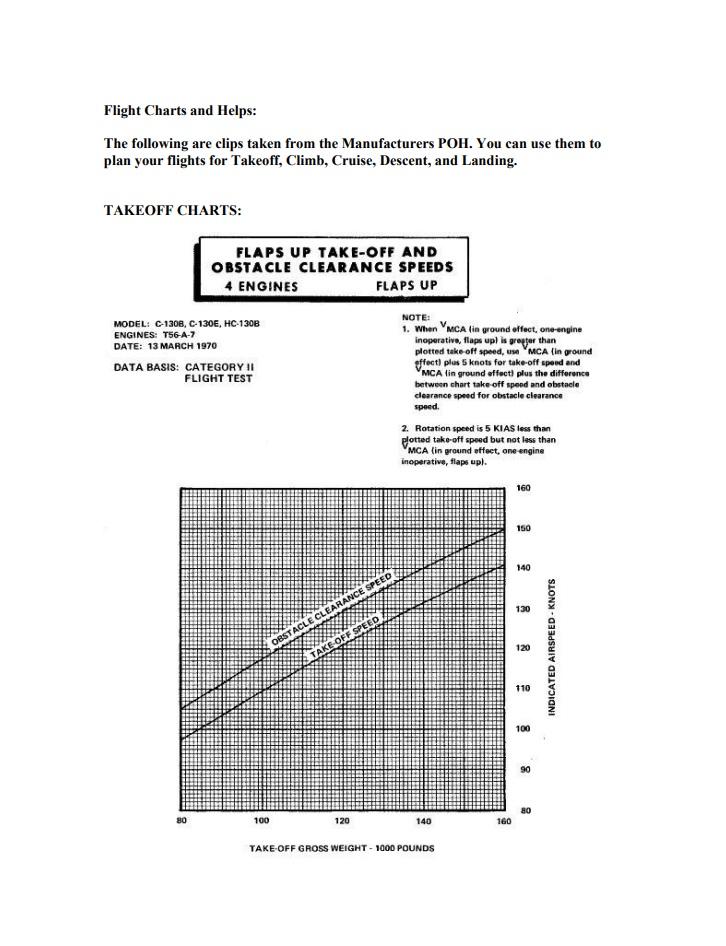
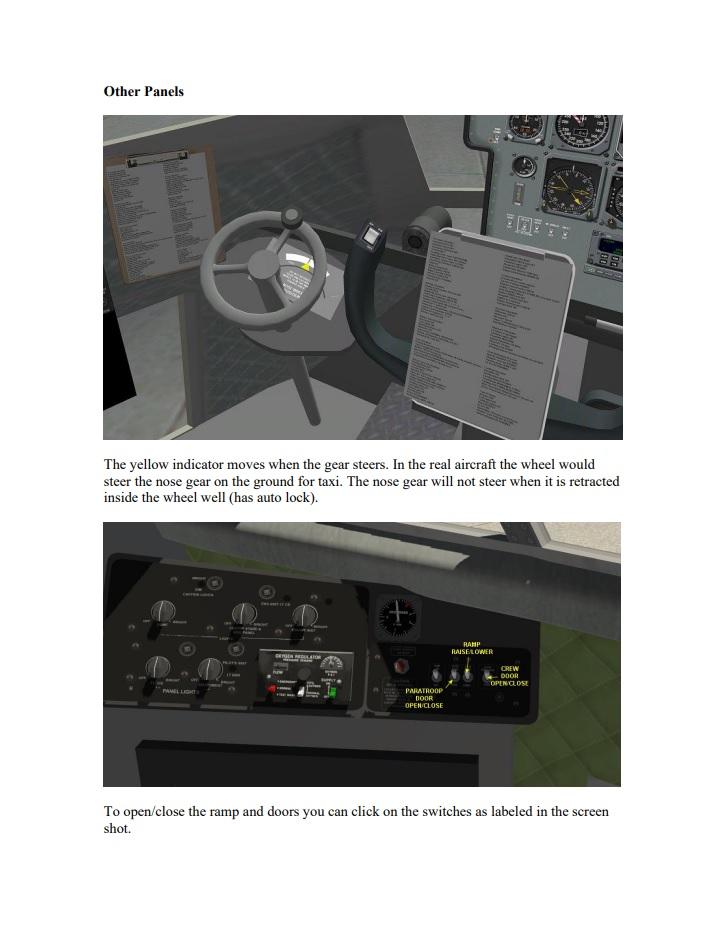




































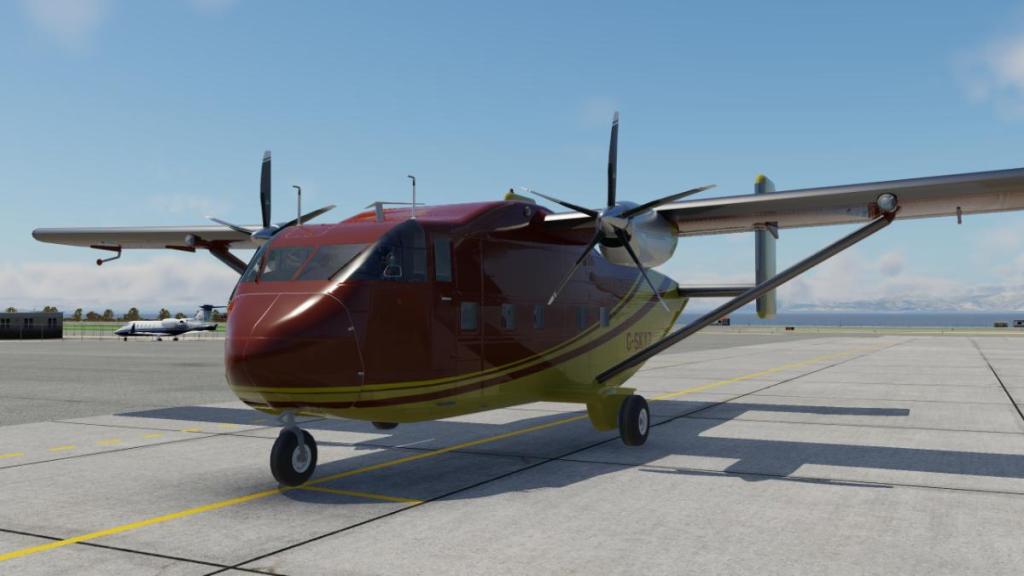








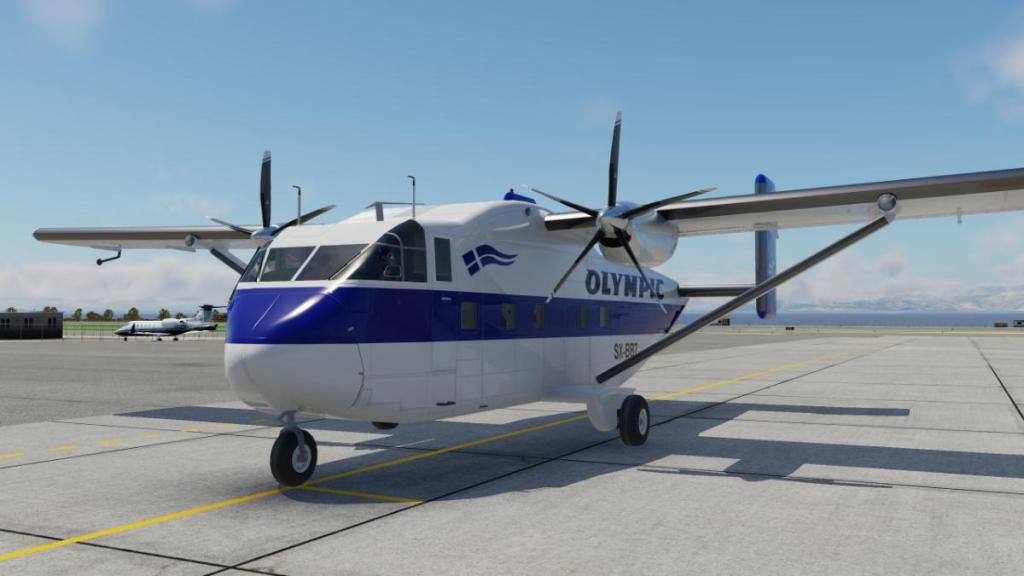


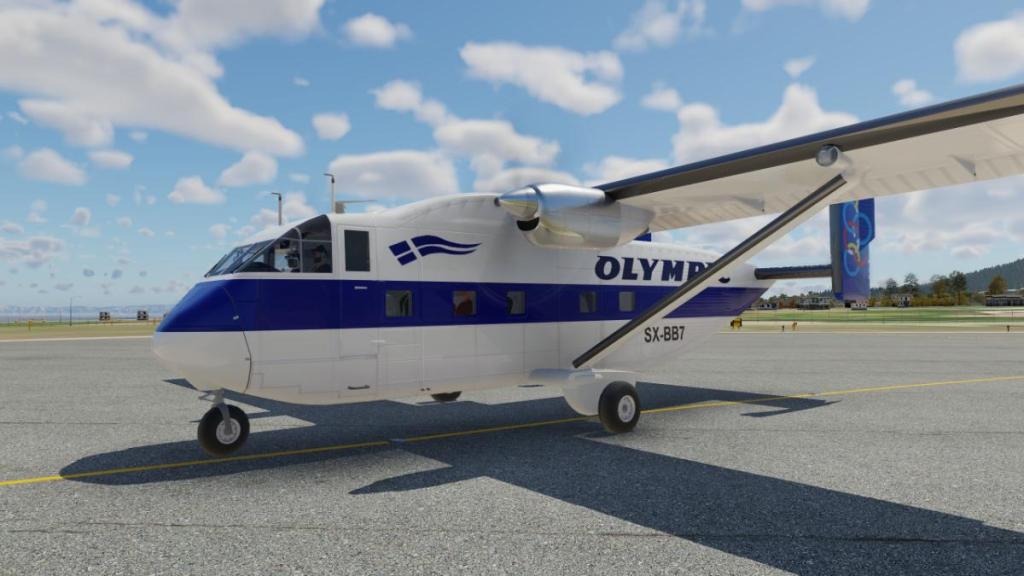

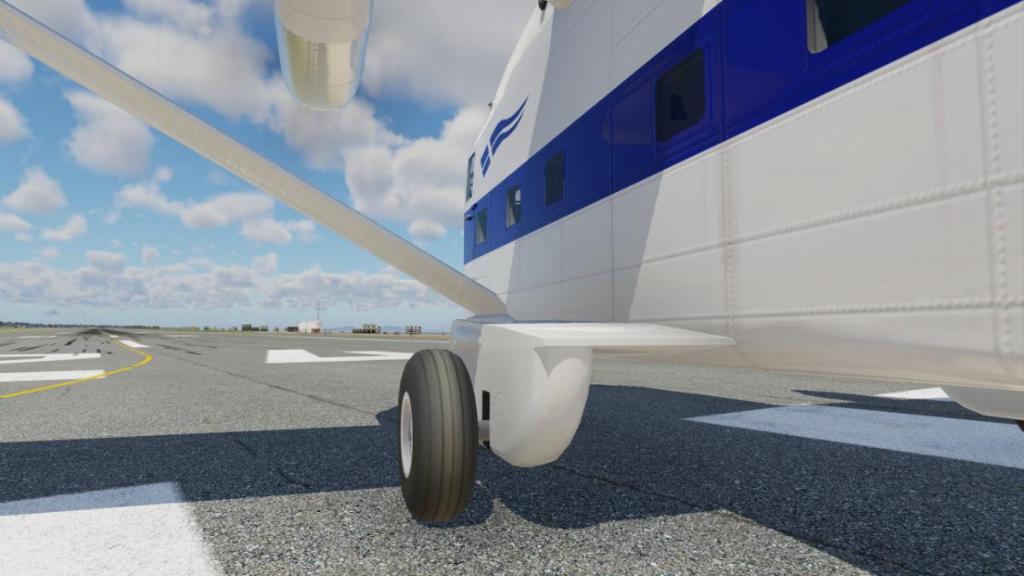


















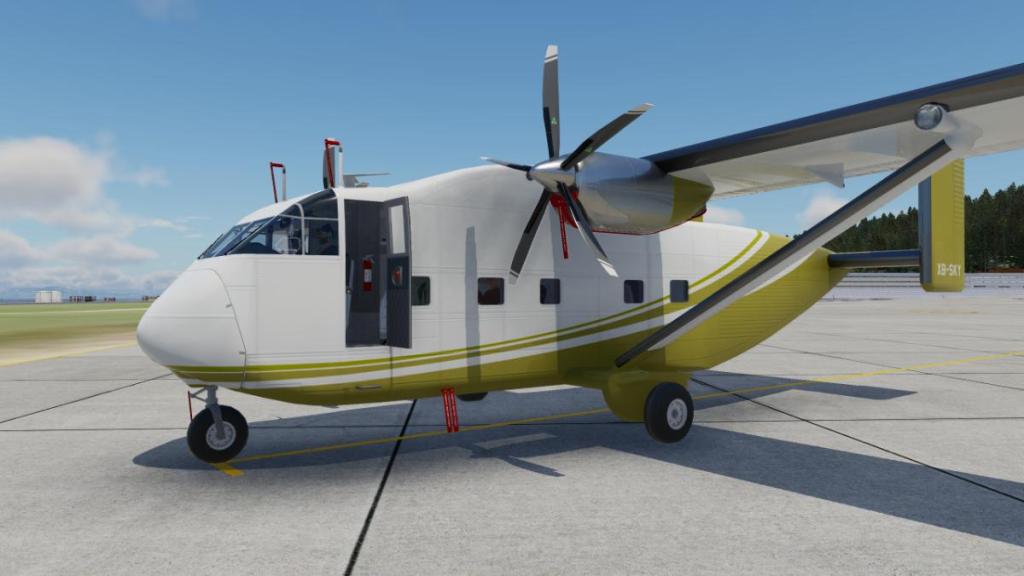








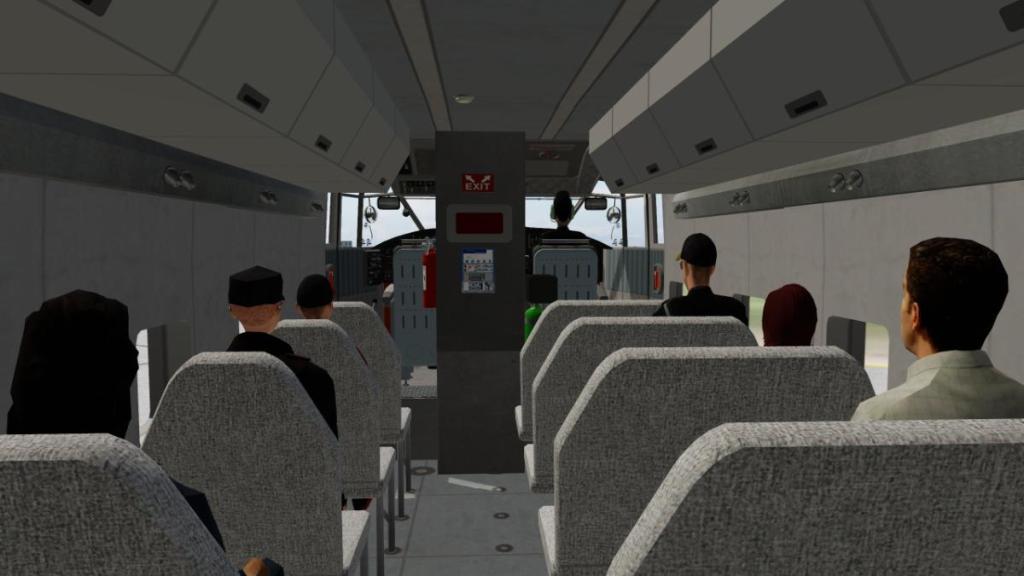
































.thumb.png.37bae791e34f84461654eb5b8960c31e.png)

.thumb.png.d3c045b93fef596164798a907f8fdae0.png)

